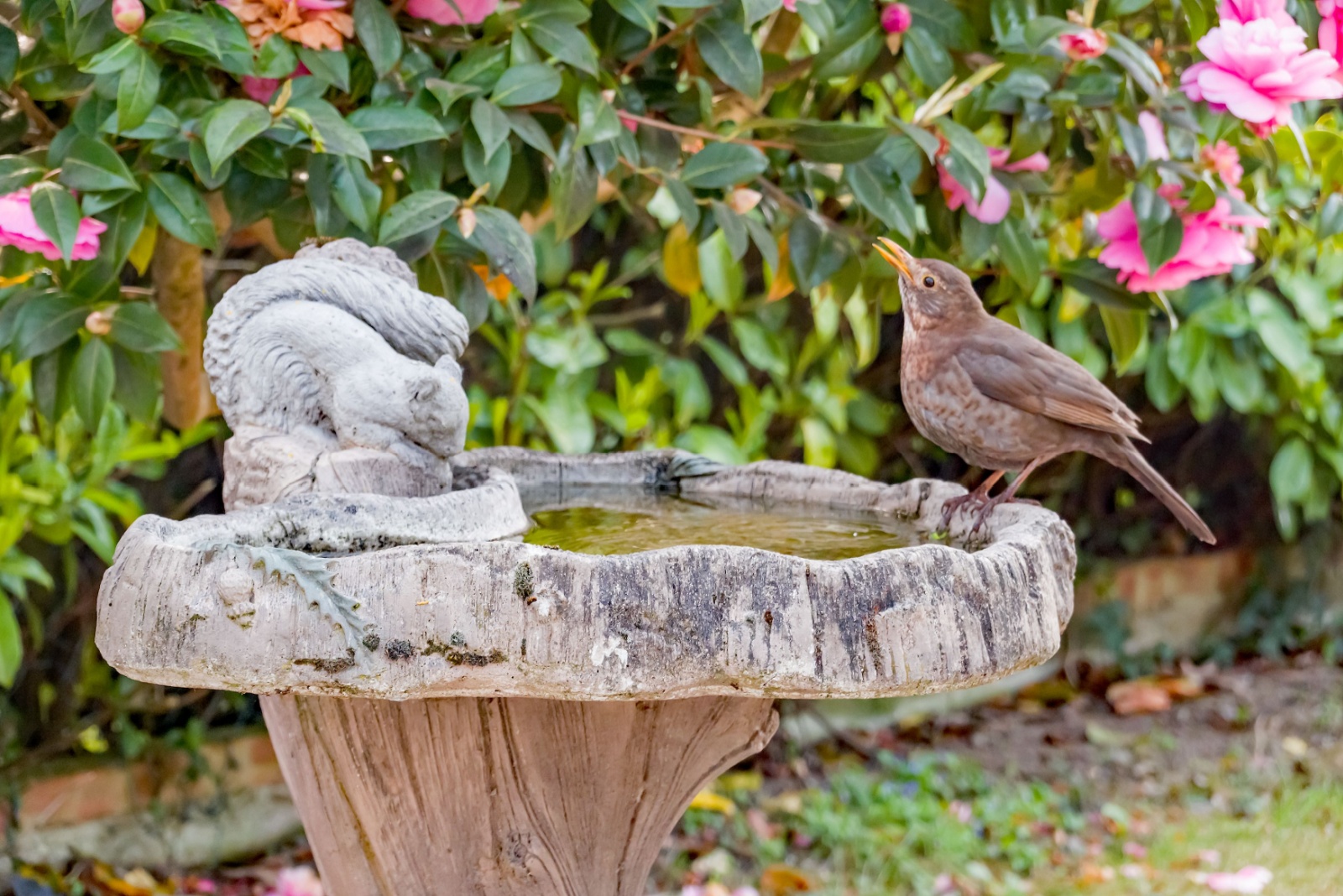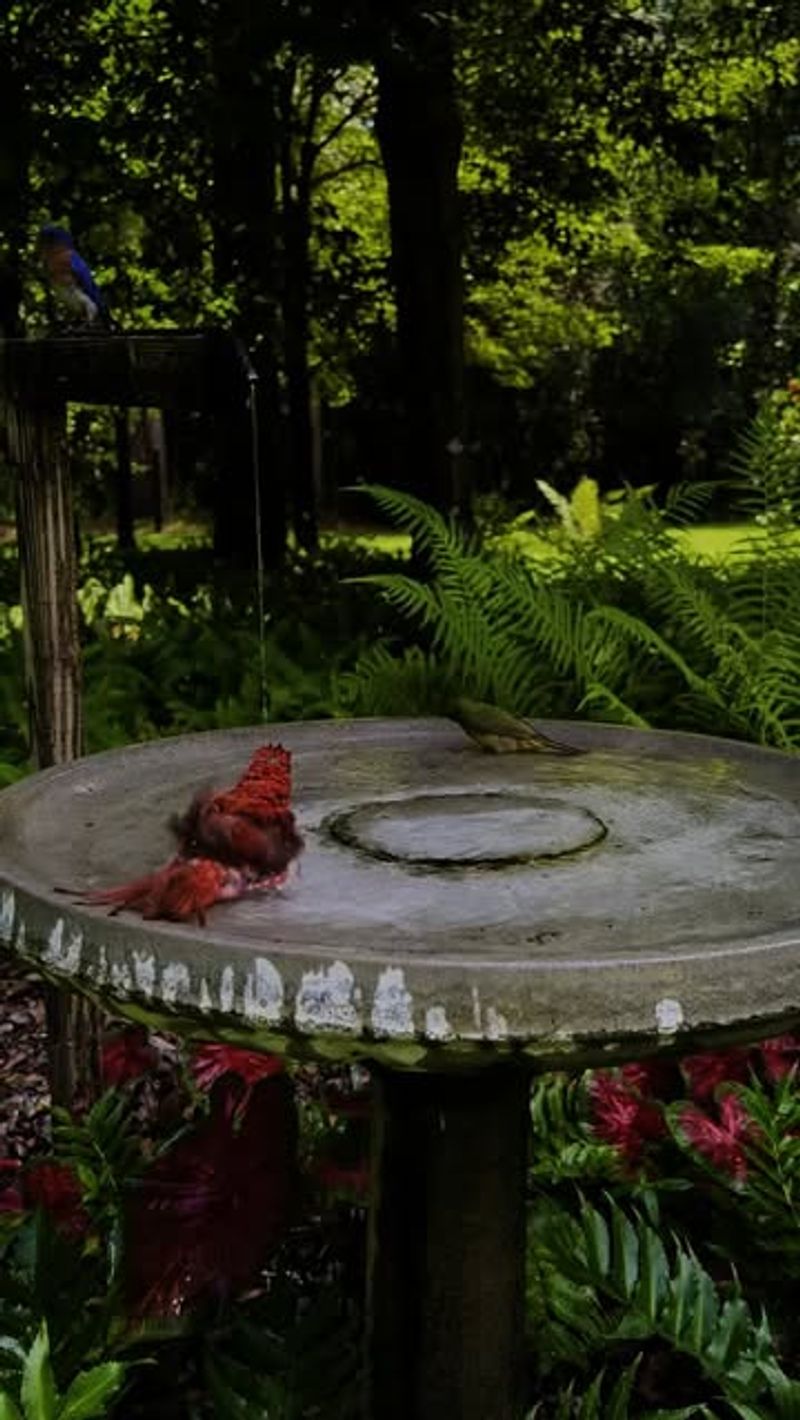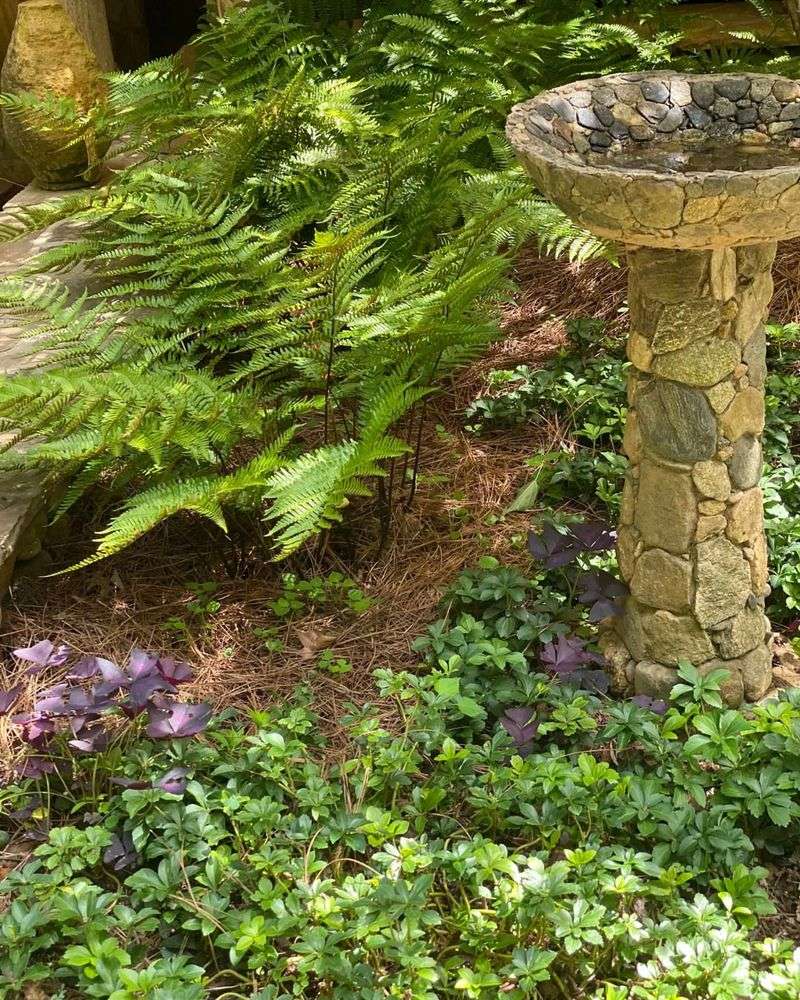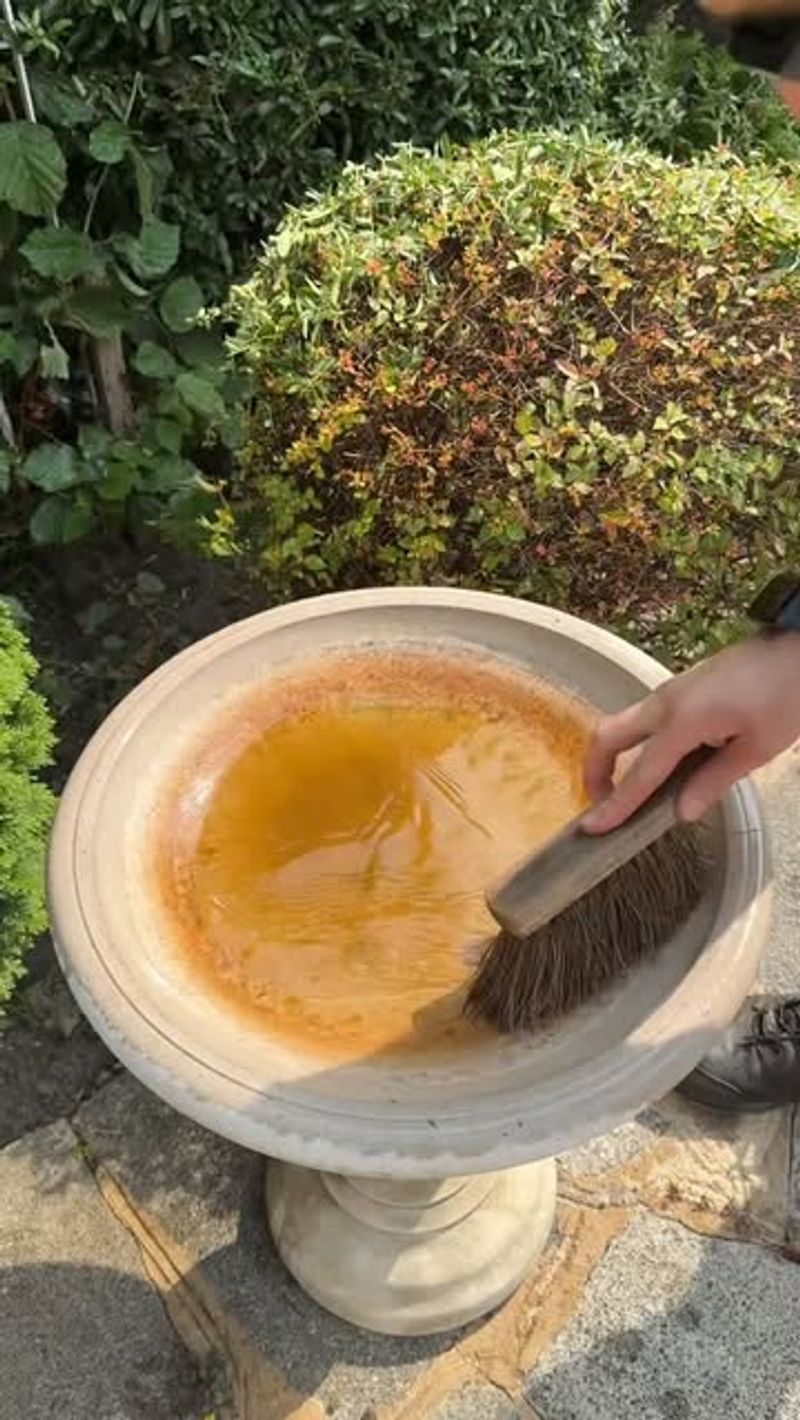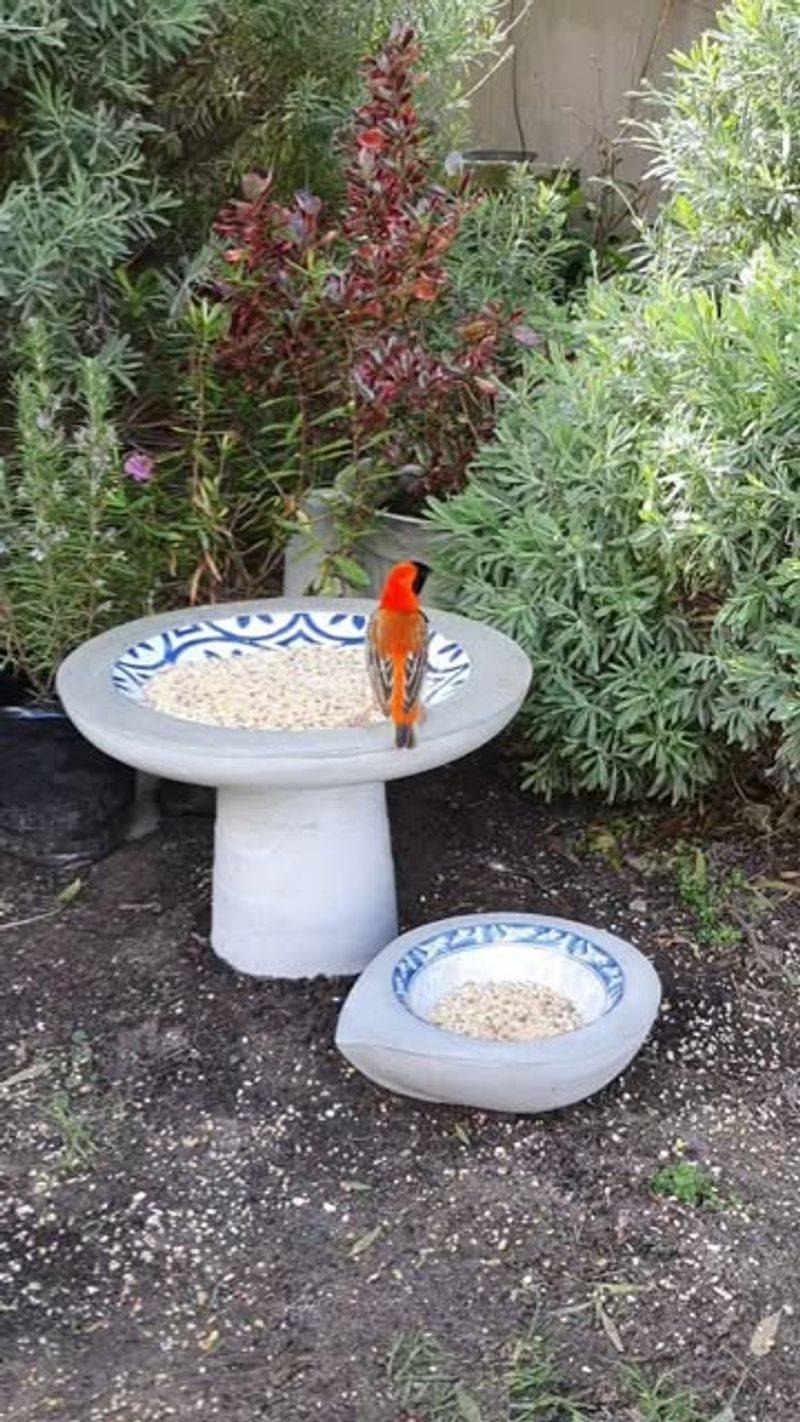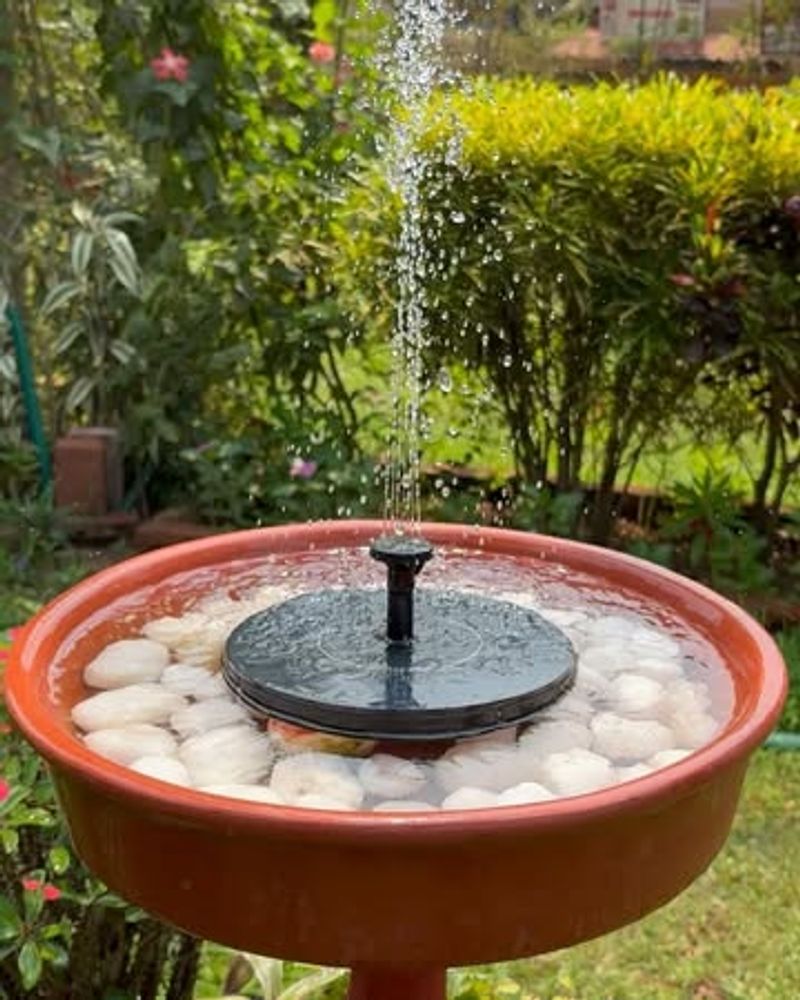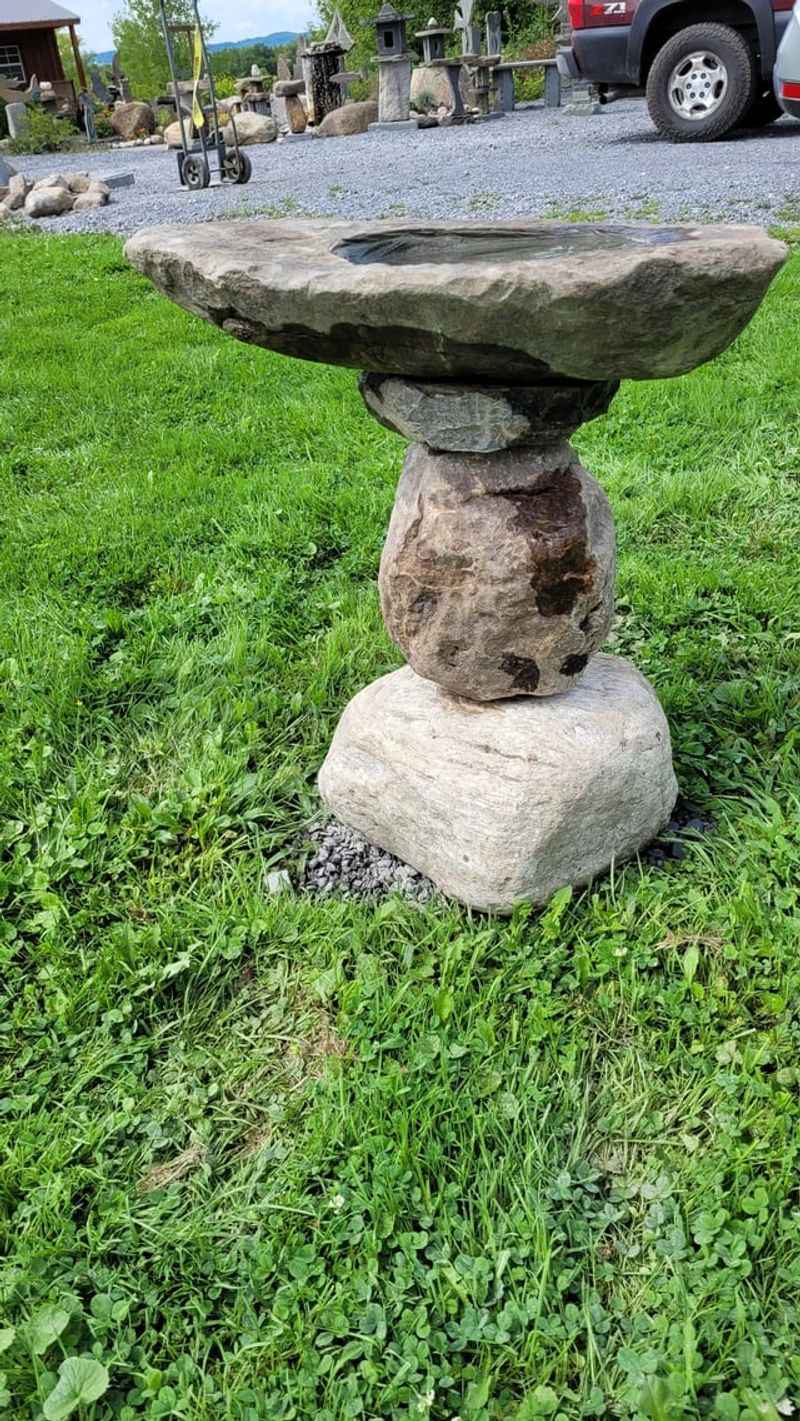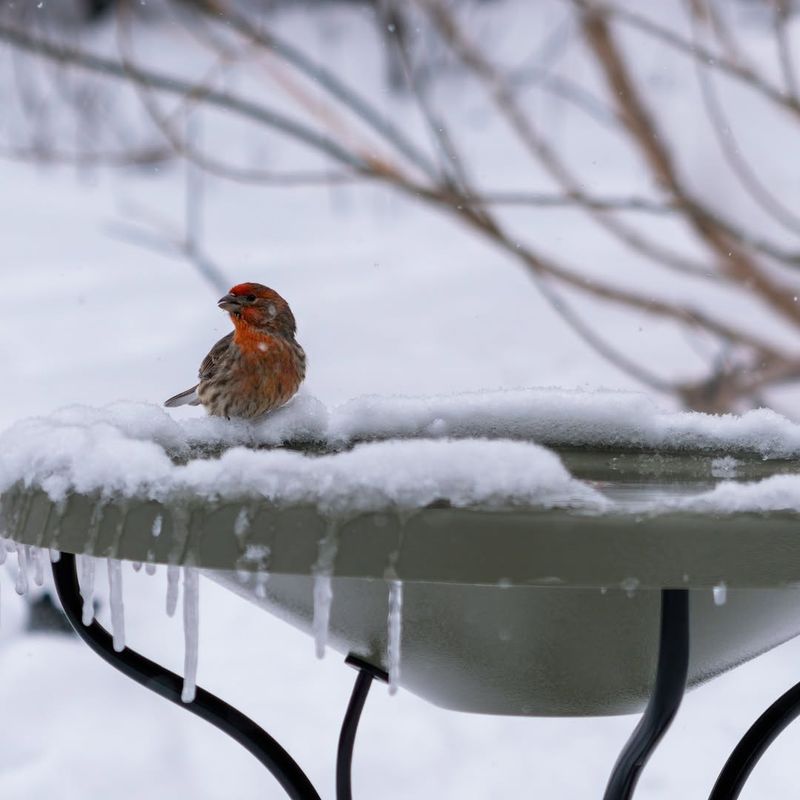Creating a welcoming space for birds in your Arizona garden requires more than just plopping a water basin among your prickly pear and desert marigolds. Birds are surprisingly picky about their bathing spots, especially in our scorching desert climate where water is precious.
When your carefully placed birdbath sits empty day after day, you might be making one of these common mistakes that send feathered visitors flying elsewhere.
1. Too-Deep Water Scares Off Smaller Birds
Most birds prefer shallow puddles, not swimming pools! Many desert species visiting Arizona gardens are small and won’t approach water deeper than 2 inches. My hummingbirds avoided my birdbath completely until I added some flat stones inside.
Creating varying depths allows both tiny finches and larger thrashers to bathe comfortably. Try placing smooth river rocks or pebbles in one section to create a gradual slope from very shallow to deeper areas.
A neighbor in Phoenix transformed her unused birdbath by adding a handful of colorful glass stones that created perfect tiny pools among her lantana and sage bushes. The birds returned within days.
2. Letting Water Become Too Hot
Arizona summers can turn birdbath water scalding within hours! Birds won’t touch water that’s heated to uncomfortable temperatures, especially during our brutal summer months when temperatures regularly exceed 110°F.
Moving your bath to a partially shaded spot under a mesquite tree or palo verde provides natural cooling. Adding a small recirculating pump creates movement that helps regulate temperature while discouraging mosquito breeding.
Last July, I placed my ceramic bath under the dappled shade of my desert willow, and the difference was immediate. Verdins and cactus wrens began visiting throughout the afternoon instead of only at dawn.
3. Forgetting To Clean Regularly (Quick Fix Inside)
Stagnant, murky water filled with fallen leaves and debris isn’t just unappealing—it’s potentially dangerous for birds. Our dusty desert environment means birdbaths get dirty faster than you’d expect, especially during monsoon season when winds kick up.
Establish a twice-weekly cleaning routine using a stiff brush to scrub away algae and mineral deposits. Avoid chemical cleaners; a simple solution of one part vinegar to nine parts water works perfectly for stubborn stains.
For me, the biggest change came when I started keeping a dedicated cleaning brush hanging near my garden faucet. This simple reminder helped me maintain crystal clear water among my desert marigolds and brittlebush.
4. Poor Placement Makes Birds Feel Unsafe
Hiding your birdbath in a secluded corner might seem logical, but birds need to feel secure while bathing. Predators like neighborhood cats can easily ambush birds when the bath sits directly under dense shrubbery or against walls.
Position your birdbath about 10-15 feet from protective cover like a palo verde or creosote bush. This distance gives birds a quick escape route while keeping them visible enough to spot approaching dangers.
After relocating my bath away from the wall and closer to my open patio area, I noticed Gambel’s quail families started making regular visits. They appreciate the clear sightlines while still having nearby desert spoon plants for quick retreats.
5. No Movement Means Stale, Unattractive Water
Still water doesn’t catch a bird’s eye! In natural settings, birds are drawn to moving water that sparkles in the sunlight and signals freshness. Static birdbaths often go unnoticed among Arizona’s garden vegetation.
Adding a small solar fountain or dripper creates enticing ripples that birds can spot from high above. Even in our intense desert sun, these devices work wonderfully and use the abundant solar energy to keep water moving.
A fellow gardener in Tucson showed me how she hangs a recycled plastic container with a tiny hole above her bath, creating a slow drip that attracts curve-billed thrashers and Abert’s towhees to her yard even during the driest months.
6. Slippery Surfaces Send Birds Sliding
Many commercial birdbaths feature smooth, polished surfaces that look elegant but send birds into panic mode. Birds need secure footing while bathing, especially smaller species common to Arizona gardens like verdin and black-tailed gnatcatchers.
Rough-textured concrete or stone baths provide natural grip. For existing slippery baths, adding a layer of small pebbles or even a piece of textured rubber mat cut to fit the bottom creates instant traction.
In my garden surrounded by globe mallow and desert marigold, I noticed birds avoided my glazed ceramic bath until I added river stones. Now they perch confidently along the edges before hopping in for their daily splash.
7. Ignoring Seasonal Water Needs Year-Round
Many Arizona gardeners maintain birdbaths only during summer months, not realizing winter visitors need water too! Our mild winters attract different bird species than summer, and even resident birds struggle to find water during dry winter periods.
Keep your birdbath filled and clean year-round, adjusting depth seasonally. During winter, maintain slightly deeper water that won’t freeze overnight in higher elevation gardens like those in Flagstaff or Prescott.
Walking through my garden last January, surrounded by dormant desert spoon and brittlebush, I spotted a group of yellow-rumped warblers and white-crowned sparrows gratefully visiting my bath—winter visitors I’d have missed completely had I emptied it for the season.

